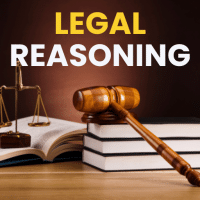CLAT Exam > CLAT Questions > Motor Vehicle accident cases should be treate...
Start Learning for Free
Motor Vehicle accident cases should be treated with a humanity touch.
- a)Motor Vehicle
- b)accident cases should
- c)be treated with a
- d)humanity touch.
- e)No error
Correct answer is option 'D'. Can you explain this answer?
Most Upvoted Answer
Motor Vehicle accident cases should be treated with a humanity touch.a...
Error Spotting
Error: The phrase "humanity touch" is incorrect. It should be "human touch."
Correction: "be treated with a human touch."
Explanation:
The given sentence is discussing how motor vehicle accident cases should be handled. The sentence is grammatically correct except for the phrase "humanity touch" in option (d). This phrase does not make sense and is incorrect. The correct phrase should be "human touch," which means to handle the situation with compassion and empathy towards the people involved.
Therefore, the correct sentence is: "Motor Vehicle accident cases should be treated with a human touch." The phrase "human touch" makes sense in the context of the sentence, as it conveys the idea of treating the situation with empathy and compassion towards the people involved.
Error: The phrase "humanity touch" is incorrect. It should be "human touch."
Correction: "be treated with a human touch."
Explanation:
The given sentence is discussing how motor vehicle accident cases should be handled. The sentence is grammatically correct except for the phrase "humanity touch" in option (d). This phrase does not make sense and is incorrect. The correct phrase should be "human touch," which means to handle the situation with compassion and empathy towards the people involved.
Therefore, the correct sentence is: "Motor Vehicle accident cases should be treated with a human touch." The phrase "human touch" makes sense in the context of the sentence, as it conveys the idea of treating the situation with empathy and compassion towards the people involved.
Free Test
FREE
| Start Free Test |
Community Answer
Motor Vehicle accident cases should be treated with a humanity touch.a...
The correct sentence is:
Motor Vehicle accident cases should be treated with a touch of humanity.

|
Explore Courses for CLAT exam
|

|
Question Description
Motor Vehicle accident cases should be treated with a humanity touch.a)Motor Vehicleb)accident cases shouldc)be treated with ad)humanity touch.e)No errorCorrect answer is option 'D'. Can you explain this answer? for CLAT 2025 is part of CLAT preparation. The Question and answers have been prepared according to the CLAT exam syllabus. Information about Motor Vehicle accident cases should be treated with a humanity touch.a)Motor Vehicleb)accident cases shouldc)be treated with ad)humanity touch.e)No errorCorrect answer is option 'D'. Can you explain this answer? covers all topics & solutions for CLAT 2025 Exam. Find important definitions, questions, meanings, examples, exercises and tests below for Motor Vehicle accident cases should be treated with a humanity touch.a)Motor Vehicleb)accident cases shouldc)be treated with ad)humanity touch.e)No errorCorrect answer is option 'D'. Can you explain this answer?.
Motor Vehicle accident cases should be treated with a humanity touch.a)Motor Vehicleb)accident cases shouldc)be treated with ad)humanity touch.e)No errorCorrect answer is option 'D'. Can you explain this answer? for CLAT 2025 is part of CLAT preparation. The Question and answers have been prepared according to the CLAT exam syllabus. Information about Motor Vehicle accident cases should be treated with a humanity touch.a)Motor Vehicleb)accident cases shouldc)be treated with ad)humanity touch.e)No errorCorrect answer is option 'D'. Can you explain this answer? covers all topics & solutions for CLAT 2025 Exam. Find important definitions, questions, meanings, examples, exercises and tests below for Motor Vehicle accident cases should be treated with a humanity touch.a)Motor Vehicleb)accident cases shouldc)be treated with ad)humanity touch.e)No errorCorrect answer is option 'D'. Can you explain this answer?.
Solutions for Motor Vehicle accident cases should be treated with a humanity touch.a)Motor Vehicleb)accident cases shouldc)be treated with ad)humanity touch.e)No errorCorrect answer is option 'D'. Can you explain this answer? in English & in Hindi are available as part of our courses for CLAT.
Download more important topics, notes, lectures and mock test series for CLAT Exam by signing up for free.
Here you can find the meaning of Motor Vehicle accident cases should be treated with a humanity touch.a)Motor Vehicleb)accident cases shouldc)be treated with ad)humanity touch.e)No errorCorrect answer is option 'D'. Can you explain this answer? defined & explained in the simplest way possible. Besides giving the explanation of
Motor Vehicle accident cases should be treated with a humanity touch.a)Motor Vehicleb)accident cases shouldc)be treated with ad)humanity touch.e)No errorCorrect answer is option 'D'. Can you explain this answer?, a detailed solution for Motor Vehicle accident cases should be treated with a humanity touch.a)Motor Vehicleb)accident cases shouldc)be treated with ad)humanity touch.e)No errorCorrect answer is option 'D'. Can you explain this answer? has been provided alongside types of Motor Vehicle accident cases should be treated with a humanity touch.a)Motor Vehicleb)accident cases shouldc)be treated with ad)humanity touch.e)No errorCorrect answer is option 'D'. Can you explain this answer? theory, EduRev gives you an
ample number of questions to practice Motor Vehicle accident cases should be treated with a humanity touch.a)Motor Vehicleb)accident cases shouldc)be treated with ad)humanity touch.e)No errorCorrect answer is option 'D'. Can you explain this answer? tests, examples and also practice CLAT tests.

|
Explore Courses for CLAT exam
|

|
Signup for Free!
Signup to see your scores go up within 7 days! Learn & Practice with 1000+ FREE Notes, Videos & Tests.


















